Protecting your Wandsworth property starts with smart roofing. Our Roofing Services in Wandsworth defend against leaks, damp, and heat loss—maximising value, safety, and peace of mind. Serving London and the Home Counties, we handle every project with care, full compliance, and attention to lasting results.
With years of proven experience, certifications like Which Trusted Trader and CITB, and premium brands including Welsh Slate, ALM Lead, and Kemper, you’re in safe hands. Book a free survey today and protect your property.

Ignoring minor roofing issues leads to leaks, damp, insulation failures, and escalating structural risks. Every delay increases repair costs and exposes your property to more severe damage, no matter its age or use.

Proper Roofing Services in Wandsworth strengthen your building’s resistance to storms, improve insulation, and secure compliance with all building standards. For homeowners, it means year-round peace of mind. Landlords gain dependable asset protection, and businesses avoid costly interruptions. Proactive care is the investment all property owners can trust for safety, performance, and long-term value.
Roofing Services in Wandsworth include installations, repairs, upgrades, and restorations for homes, businesses, and heritage sites. We focus on long-term performance, total compliance, and materials from proven suppliers. Every service is tailored—delivered with safety, durability, and care.
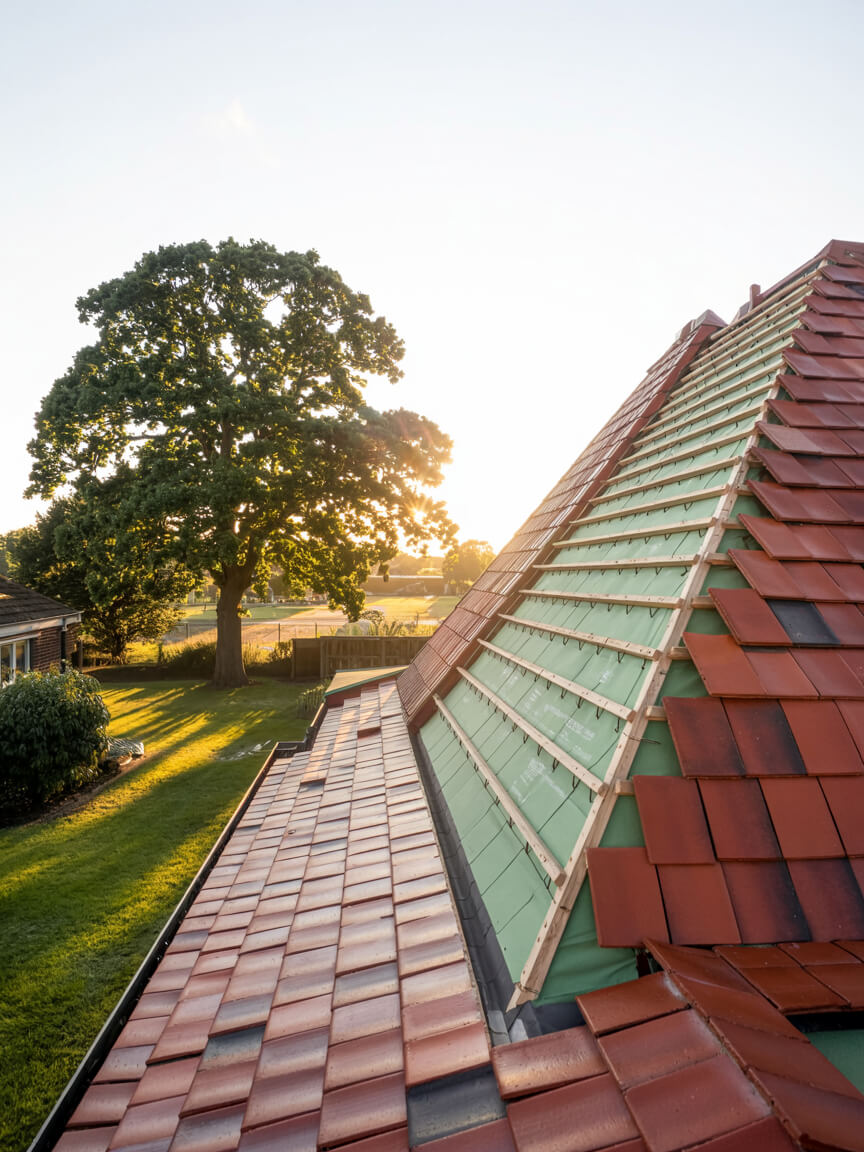
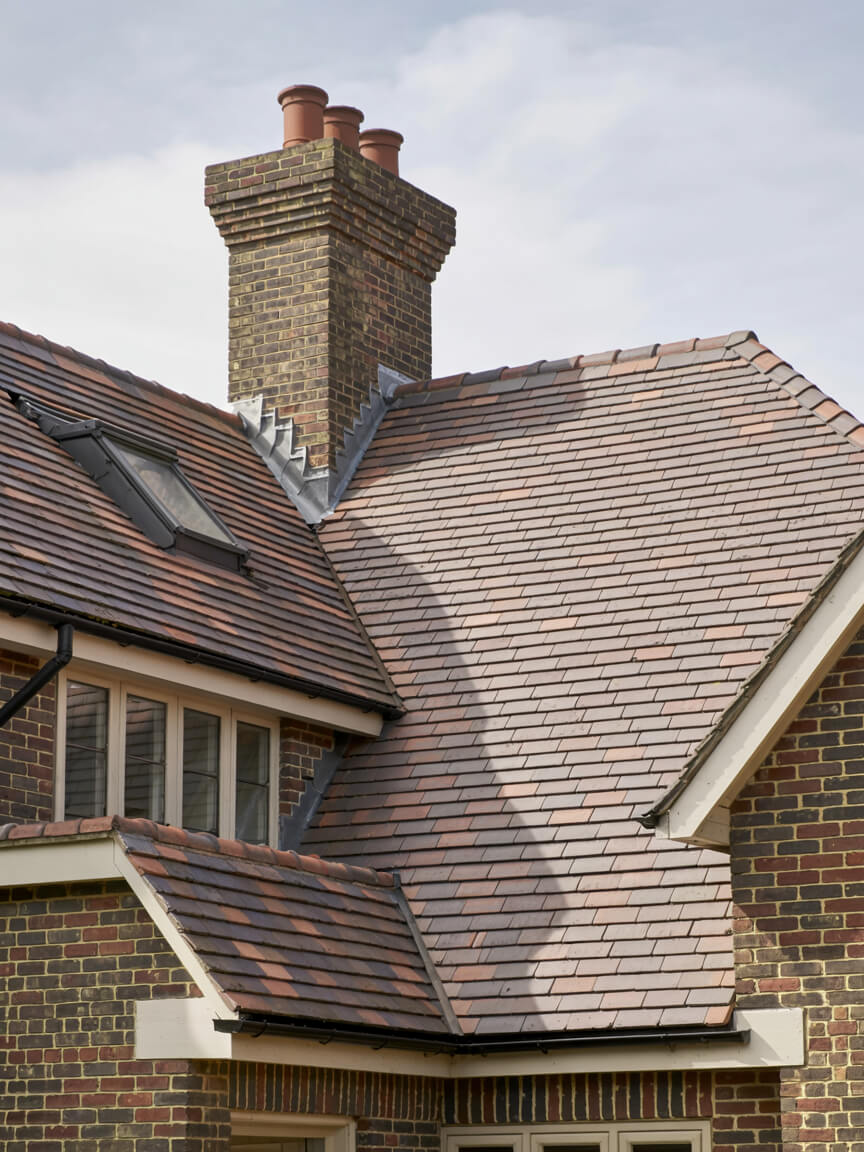
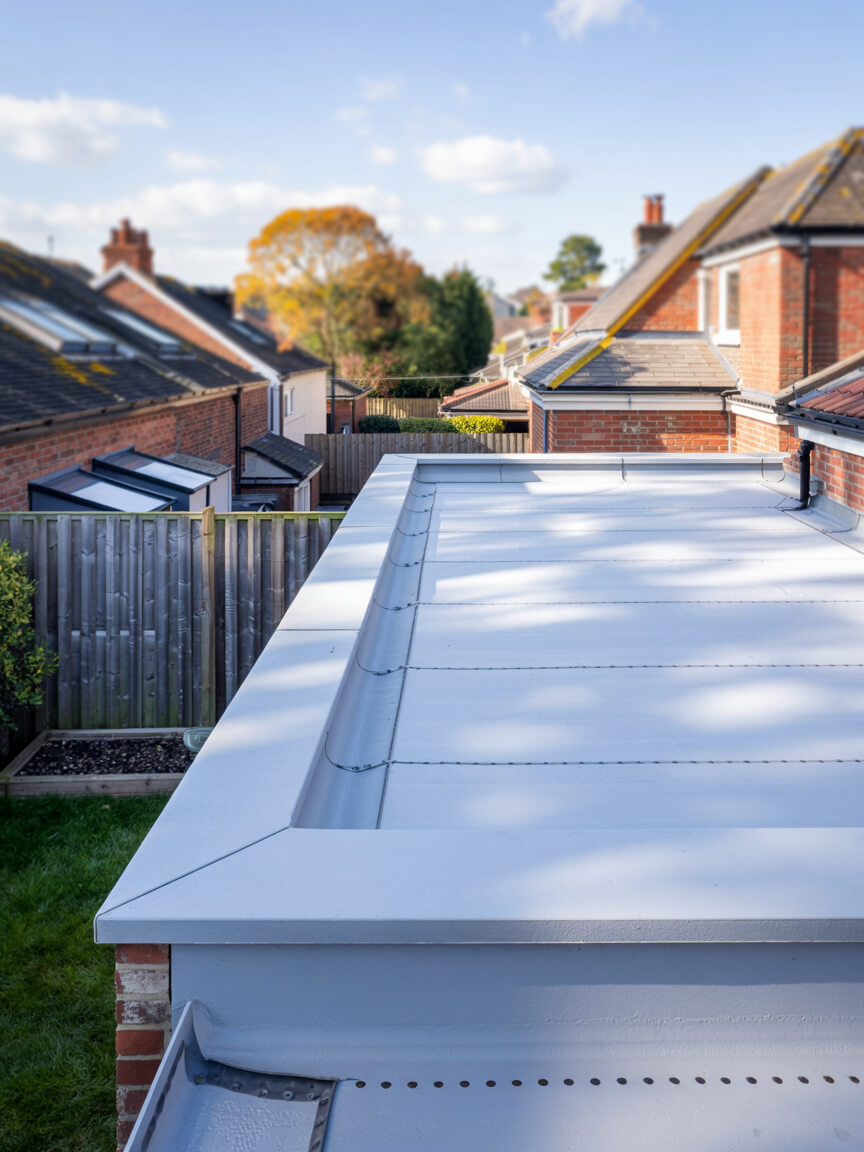
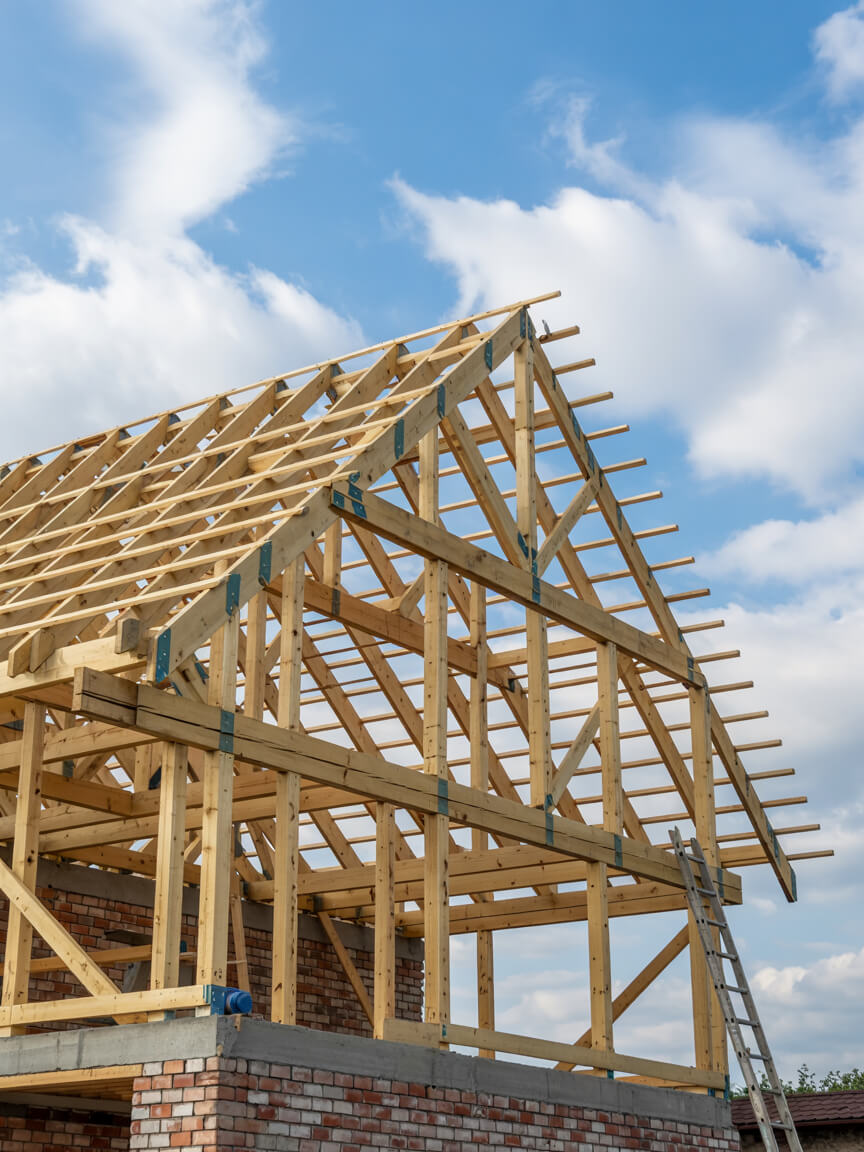
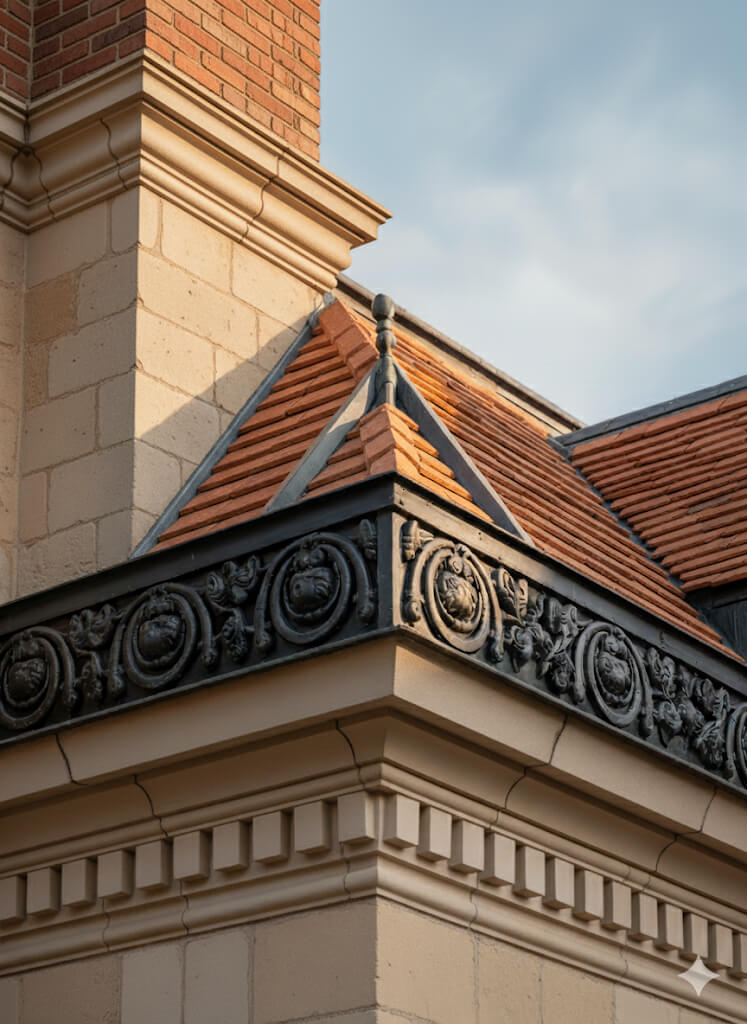
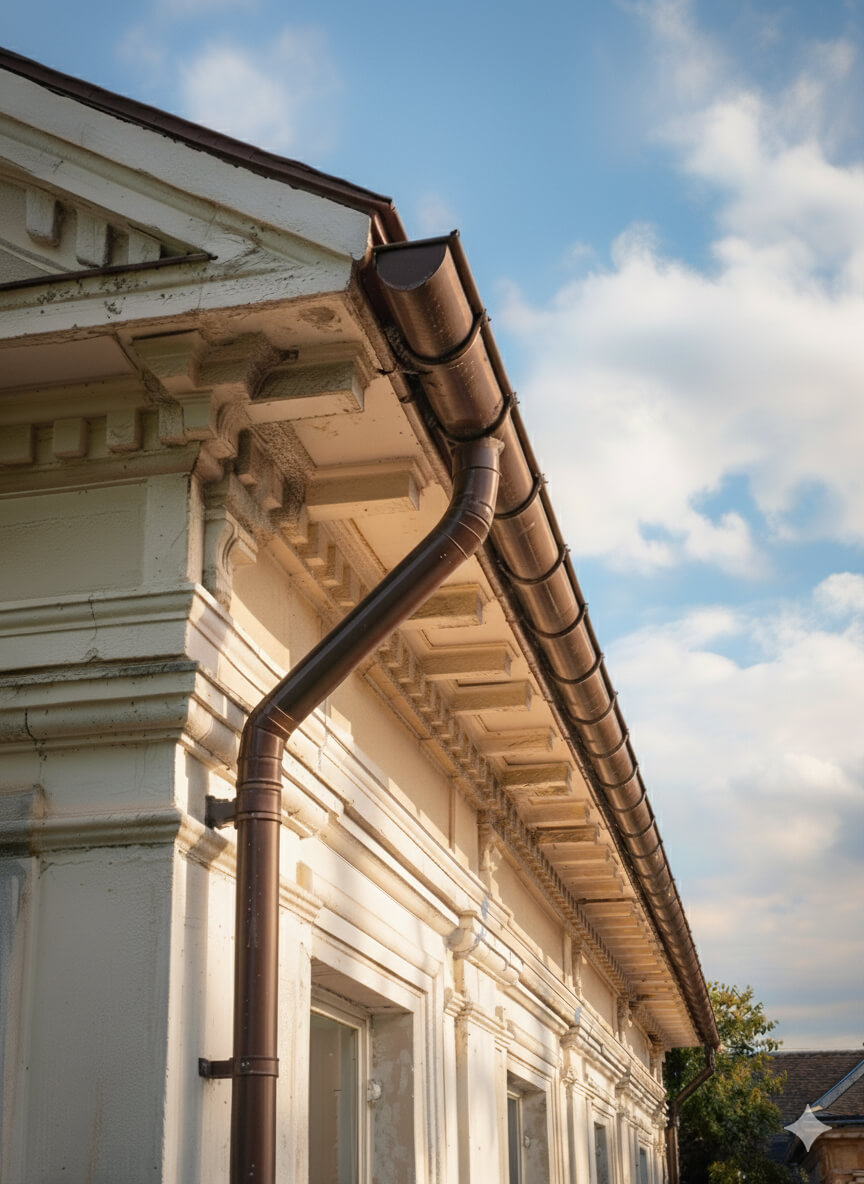

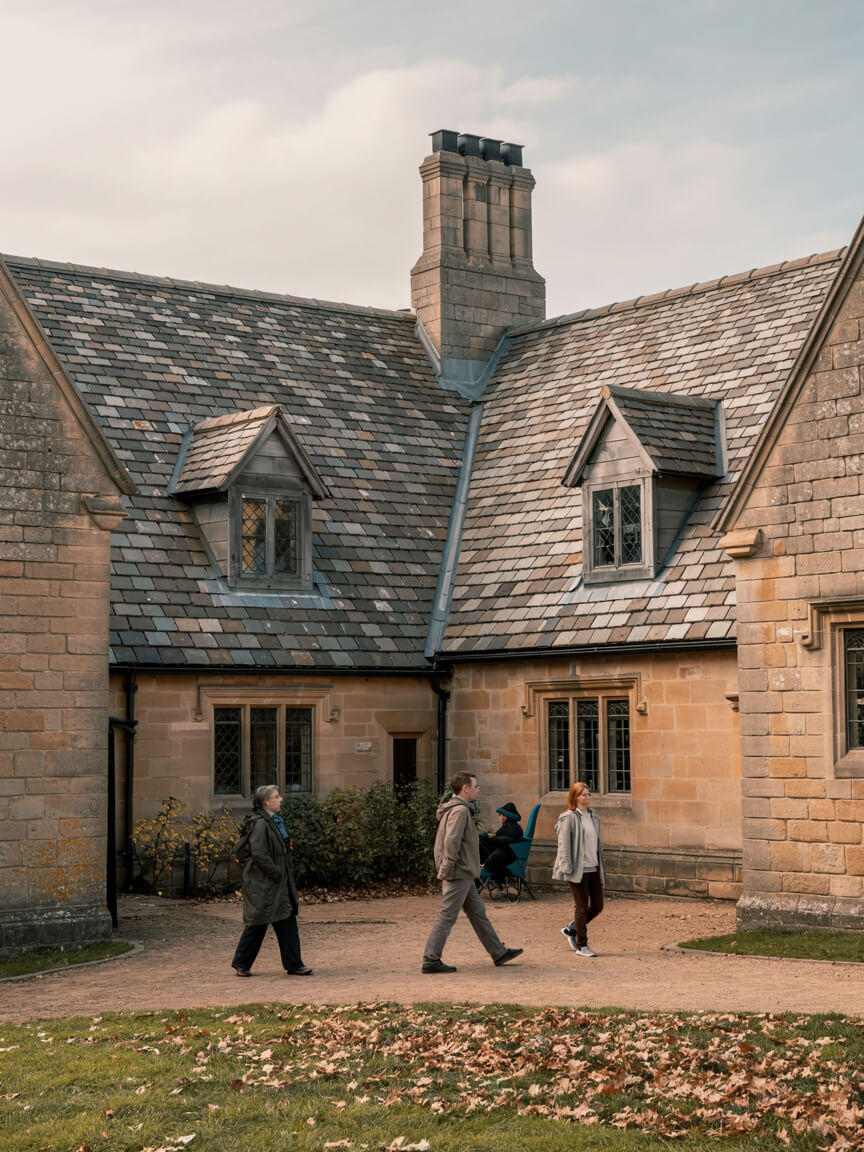
Every Roofing Services in Wandsworth project is adapted to property type, roof structure, and environmental demands. Tailoring ensures compliance with regulations, minimises disruption, and maximises long-term value. From homes and businesses to industrial sites and listed heritage buildings, our flexible approach guarantees roofing solutions that meet unique needs while delivering safety, efficiency, and reliability.
Homes, extensions, and listed buildings.
Offices, retail, schools, and hospitality.
Warehouses, factories, and logistics sites.
Every Roofing Services in Wandsworth project follows proven steps with quality materials. Whether a new installation, upgrade, or repair, each layer adds durability, safety, and efficiency—tailored to protect your property and meet regulatory standards.
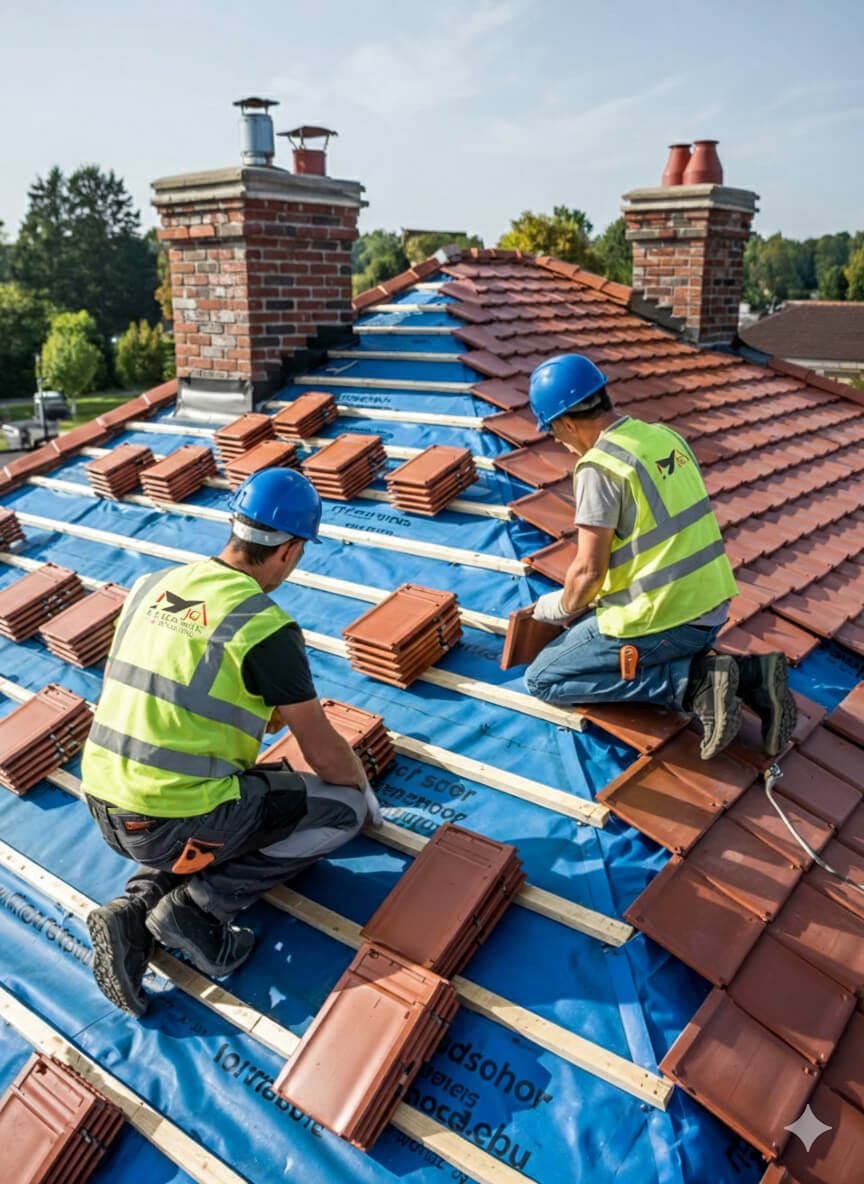
Get a free, no-obligation quote today.
Our experts are standing by to help you choose the perfect flat roofing solution.
⏱ Response within 24 hours guaranteed
Accredited by Which Trusted Trader, CITB, and approved by Kemper and Westwood, our team delivers safe, compliant, and warranty-protected Roofing Services in Wandsworth projects. These credentials mean guaranteed standards and long-term assurance—reinforced by the positive client reviews that consistently highlight quality, professionalism, and trust.


Complete reroofing. Living in Singapore at the time and T was super responsive and communicative.
Replacement of lead box gutter and new flashing to parapet wall. I had an excellent experience using James and the team. He was very prompt in all aspects of communication and completed a first class job. Really pleased.
James completed some repairs on our roof and replaced some of our pebble dash by the roof as well. He was very thorough and fixed everything. He kept us really informed by taking photos and showing us what he did and keeping us updated. It also went onto our neighbours roof and he did the same fo...
We had a leak in our bedroom and James fixed the roof for us to stop it from leaking. All the work came with a warranty. The work that was carried out was good. James and his team were polite, and did all the work quickly and without too much interruption to our day-to-day lives. Would recommend ...
J G Leadworks have repaired and replaced the roofs and gulleys over our warehouse and workshops which have meant both areas are now watertight
James and team were incredibly responsive to my request to look at a serious leak issue on my flat roof. They did a very thorough investigation and explained in detail the issue and gave a fair quote. They were quick to book in and complete the work and have checked in afterwards a few times to m...
James was quick to respond to the initial contact and was able to work around some time constraints I had. He explained what needed doing clearly and was happy to answer follow up questions. He took pictures to show each stage and I feel confident in the work that was done by James and the team. ...
JG Roofing were very easy to work with. Their quote was sensible and they stuck to that figure. They completed many repairs to my roof including, rebuilding a leaded gutter, reinforcing rotten rafters, rebuilding a long felted gutter and felting parapet walls, resurfacing and felting a flat roof,...
Planning and legal checks protect clients from costly errors, delays, and non-compliance, ensuring roofing projects meet regulatory and safety requirements.
Permission is typically required for listed properties, conservation areas, or major roof alterations. All projects must also satisfy Building Regulations, including Part A (structural safety) and Part L (energy efficiency), ensuring compliant and future-proofed installations.
Our team manages the full process, from initial surveys to legal guidance, preparing documentation, and liaising with local authorities where needed. Whether working on modern homes or heritage sites, we ensure every project is delivered legally, safely, and with minimal disruption—providing complete reassurance and peace of mind to property owners.

Every project unites skilled workmanship with rigorously tested materials.
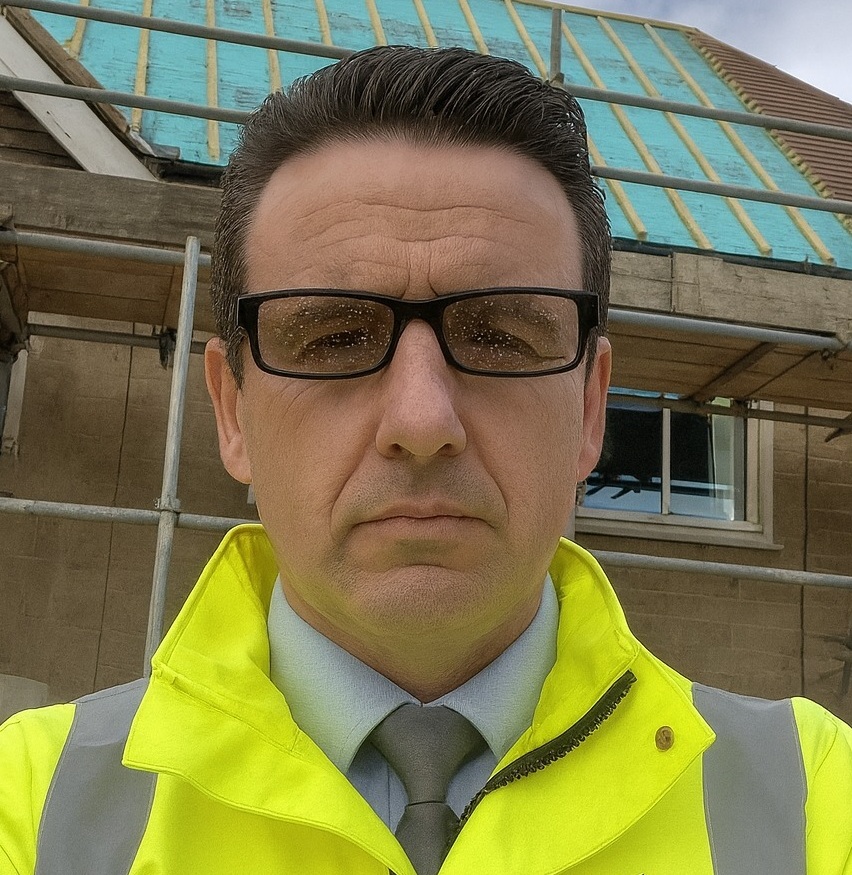
With 25 years of experience in lead sheet roofing, James is a trusted expert in heritage roofing, slate, and tiling. His knowledge of traditional methods, paired with modern compliance, makes him a go-to specialist for projects that demand both craftsmanship and durability.
Roofing Services in Wandsworth provides lasting protection, efficiency, and value, delivering durable, compliant roofing solutions that safeguard every type of property investment.
Selecting Roofing Services in Wandsworth involves balancing durability, budget, compliance, and aesthetics to secure the best-fit roofing solution for your property.
Why Clients Choose JG Leadwork and Roofing
With decades of trade experience, our teams understand the unique demands of London and Home Counties roofing. From heritage-listed properties to contemporary extensions, we adapt solutions to local regulations, weather conditions, and architectural styles with precision.
Accredited by Which Trusted Trader, CITB, and approved by Kemper, Westwood, IKO, ALM, and other leading suppliers.
These credentials guarantee safety, compliance, and access to manufacturer-backed warranties, giving clients peace of mind that their project meets the highest professional standards and benefits from warranty protection.
Our heritage projects use Welsh Slate and handmade clay tiles for authenticity, while leadwork is delivered to Lead Sheet Association (LSA) standards. Commercial installations employ Kemper and Westwood liquid systems for durability and efficiency. Each example demonstrates our reliability, blending traditional craftsmanship with modern performance.
Our workforce includes skilled roofers, heritage specialists, and safety-certified installers.
Every roofer holds NVQs, receives ongoing CPD training, and is qualified in both modern flat systems and traditional techniques, including slate and leadwork.
Team structure ensures projects run smoothly—surveyors identify needs, installers deliver with precision, and supervisors oversee compliance. This approach minimises disruption, accelerates timelines, and guarantees consistent quality across residential, commercial, and industrial roofing projects.
Every project is regulation-compliant, warranty-backed, and focused on long-term results.
Client testimonials and case studies confirm our track record, with projects praised for professionalism, durability, and customer support.
We go beyond installation with aftercare packages, maintenance support, and open communication at every stage. Property owners gain reassurance that JG Leadwork and Roofing stands behind its work. Book a free survey today and discover why homeowners, landlords, and businesses trust us with their roofing.

Get a free quote, rapid response, and expert service across London and the Home Counties. Contacting JG Leadwork and Roofing is your simple first step to dependable roofing solutions.
We source materials from leading suppliers including Supreme and IKO felt systems, Kemper, Westwood and Proteus liquid systems, Welsh Slate, handmade clay tiles, ALM Lead Mills, and Nicholson Air Track. These trusted brands guarantee durability, compliance, and warranty-backed performance across flat, pitched, heritage, and commercial roofing projects.
.
.
For homes, Roofing Services in Wandsworth safeguards comfort and enhances kerb appeal with durable, energy-efficient systems. Whether modern extensions or traditional pitched roofs, tailored solutions improve living standards and protect property value.
For businesses, Roofing Services in Wandsworth delivers cost-effective, large-scale installations with minimal disruption. Projects are planned around operations, with safety compliance, energy performance, and flexible scheduling built in—supporting offices, retail, schools, and industrial facilities with reliable, regulation-ready outcomes.
For heritage properties, Roofing Services in Wandsworth combines authentic materials such as Welsh slate, handmade clay tiles, and ALM lead with skilled conservation techniques. Listed building consent and conservation requirements are fully managed, ensuring traditional character is preserved while integrating modern weatherproofing. This careful balance provides long-term durability without compromising historic integrity or aesthetic value.
JG Leadwork and Roofing delivers Roofing Services in Wandsworth across housing, commercial, heritage, and public sectors. Every industry comes with unique requirements, from safety and compliance to efficiency and conservation. Our adaptability ensures projects are delivered with precision and professionalism—whether safeguarding homes, supporting business continuity, preserving history, or protecting critical public and healthcare facilities.
Durable roofing installed with minimal disruption, ensuring safe, regulation-compliant workspaces for staff and visitors.
High-standard, compliance-focused solutions protect community facilities while meeting strict safety and regulatory obligations.
Heavy-duty roofing tailored for wide spans, ventilation, and long-term maintenance efficiency.
Authentic materials and sensitive methods preserve historic character while adding modern protection.
Weatherproof systems that enhance kerb appeal and guarantee uninterrupted trading for outlets.
Tailored roofing improves guest comfort, safety, and ambience across hotels, restaurants, and venues.
Safe, durable systems designed for schools and universities with minimal learning disruption.
Specialist roofing solutions built for hygiene, safety, and regulatory compliance in medical environments.
Our team of NVQ-qualified roofers, LSTA-trained specialists, and health & safety-compliant professionals bring decades of combined experience. Every project is delivered with meticulous attention to detail, ensuring safe practices and consistent quality across flat, pitched, heritage, and commercial roofing disciplines.
Expertise includes heritage leadwork, slate and tile roofing, modern flat systems, and drone-assisted roof surveys. Ongoing CPD training ensures adaptability to both traditional craftsmanship and the latest innovations—giving clients confidence that every roof is built or repaired with proven skill and care.

A thorough survey highlights existing issues, structural considerations, and upgrade opportunities, ensuring the best-fit solution is identified from the very beginning.
Transparent, itemised quotes detail costs, timelines, and materials—giving you complete clarity and confidence before work starts, with no hidden surprises.
Scaffolding, access solutions, and robust safety measures are put in place to safeguard both property and people throughout the project.
Skilled roofers complete the work using accredited materials and proven techniques, delivering durable, compliant results while keeping disruption to a minimum—whether for repairs, replacements, or new installations.
Each stage is inspected against manufacturer standards and Building Regulations, with photographic documentation provided for transparency and peace of mind.
Each stage is inspected against manufacturer standards and Building Regulations, with photographic documentation provided for transparency and peace of mind.
In a competitive roofing market, many providers look the same on paper. JG Leadwork and Roofing stands out through proven expertise, accredited methods, and specialist techniques. Our combination of traditional craftsmanship and modern technology makes us the safer, smarter choice across residential, commercial, industrial, and heritage projects.
In a competitive roofing market, many providers look the same on paper. JG Leadwork and Roofing stands out through proven expertise, accredited methods, and specialist techniques. Our combination of traditional craftsmanship and modern technology makes us the safer, smarter choice across residential, commercial, industrial, and heritage projects.

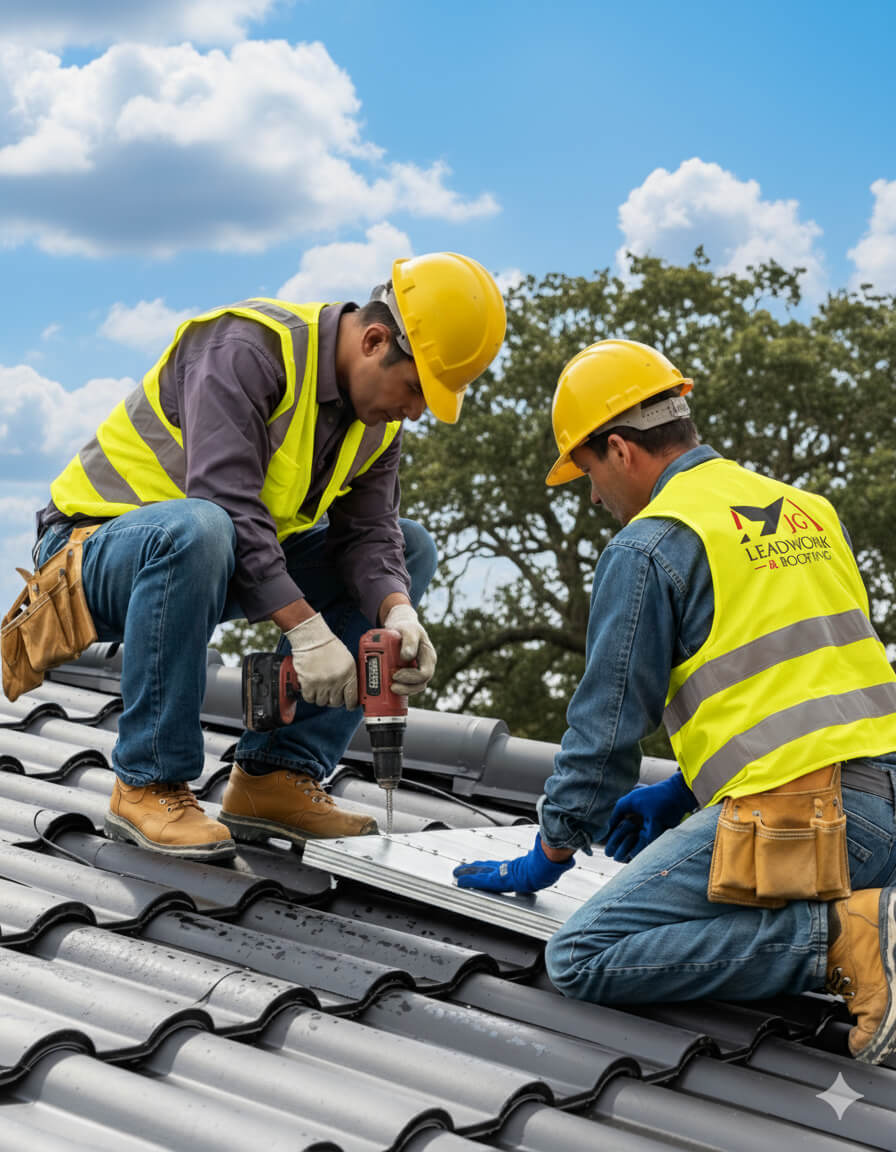
At JG Leadwork and Roofing, every project follows a structured QA process. Each stage—materials, installation, safety, and final sign-off—is measured against manufacturer specifications and UK Building Regulations to ensure durability, compliance, and warranty-backed performance across all roofing services.
Projects are only signed off once all QA checks are complete, giving clients confidence in long-term performance, structural safety, and insurance-backed peace of mind.
Every Roofing Services in Wandsworth project by JG Leadwork and Roofing is delivered in strict alignment with UK Building Regulations and recognised frameworks. This ensures structural safety, energy efficiency, durability, and protects warranties and insurance coverage across residential, commercial, industrial, and heritage properties.
Clients can be confident their project is completed legally, safely, and insurance-ready—delivering long-term performance, compliance assurance, and complete peace of mind.
Property owners often wonder about Roofing Services in Wandsworth—from costs and timescales to permissions. Below, you’ll find straightforward, trustworthy answers to the most frequent and practical queries.
Heavy rain reveals vulnerabilities that may not be obvious under normal weather, leading many property owners and managers to discover leaks only during prolonged or intense wet spells. Leaks aren’t just a minor nuisance—they can cause damaging water ingress, interior decay, insulation failure, and even structural issues if ignored. Understanding the main causes allows for earlier intervention, lower repair costs, and a reduced risk of insurance complications. Here’s a breakdown of common root causes and how to spot them in UK properties.
The most common cause of water ingress after heavy rain is deterioration of the outer surface or waterproof membrane. On pitched roofs, ageing tiles or slates may crack or slip, undermining the roof’s basic protection. Bituminous felt, EPDM rubber, and GRP fibreglass membranes on flat roofs can develop microcracks, splits at seams, or blistering as a result of UV exposure, expansion–contraction from freeze–thaw cycles, and plain old age. Heavy rain exploits these weaknesses, allowing water to penetrate below the surface layer.
Consequences include dark stains on ceilings, peeling paint, and—for flat roofs—standing water pooling at low spots. Persistent damp soon affects roof timbers and plaster, risking rot, mould, or even eventual structural movement. Early action avoids major repairs.
Lead flashing—used around chimneys, roof valleys, repairs, and at any wall abutment—is a prime suspect for leaks, especially where movement, incorrect installation, or corrosion has weakened the seal. Flashing bridges the vulnerable junction between materials; if its edge lifts, cracks, or splits, driven rain finds an easy entry. Inadequate lapping, missing sealant, or incorrectly shaped flashings further accelerate failures at these weak points.
Look for warning signs such as moisture tracks down chimney breasts, wallpaper bubbling near walls, or a musty odour after storms. Any green or grey salt-like deposits on the surface of the lead could signal corrosion. If not promptly addressed, minor flashing leaks can saturate insulation, destroy decorative finishes, and cause long-term damp problems inside structural walls.
Rain leaks are often aggravated—or even caused—by external and design issues. Ponding—where water collects on a flat roof without draining within 48 hours—creates continual pressure on any imperfections, drastically shortening membrane life. In the UK, a minimum roof fall of 1:80 (about 7mm per 0.5m run) is generally recommended to shed rain efficiently (BS6229). Blocked gutters, downpipes, or hoppers cause water to overtop upstands, running straight into roof voids or wall cavities.
Internally, condensation can be as damaging as external leaks—if insulation levels, vapour barriers, or roof ventilation are lacking (see Part L of the Building Regulations). This results in interstitial condensation, where warm, humid air meets a cold roof surface, forming hidden moisture inside the structure, encouraging mould and timber decay.
A systematic approach to inspection ensures all major leak sources are identified. Begin with a visual survey: check for cracked tiles/slates, gaps or splits in flat roof membranes, and secure flashing. Examine ceilings and upper wall corners for damp marks or mould blooms. Use a moisture metre to pinpoint hidden damp in timbers or insulation; a borescope can help investigate concealed spaces. For large or flat roofs, a drone survey or core sample can assess overall condition and spot early surface ponding.
Here’s an illustrative comparison:
| Cause | Common Symptom | Risk if Ignored | Indicative Remedy |
|---|---|---|---|
| Membrane cracking/age | Peeling paint, ceiling stains | Rot, structural risk | Local repair or overlay |
| Flashing failure | Damp behind chimney/walls | Damp, timber decay | Re-fit or renew flashing |
| Ponding/blockage | Standing water after rain | Membrane failure | Clear drains, adjust fall |
| Poor ventilation | Mould/musty odour in loft | Mould, condensation | Improve vents, assess insulation |
Regular, proactive inspection remains the best method for property owners and professionals to identify minor breaches before they turn into major leaks, keeping internal spaces dry and building elements sound.
The cost comparison between slate and tile roofing for London properties hinges on more than just material prices. For property owners, contractors, or developers weighing up these options, the decision impacts far more than aesthetics—it directly shapes budget, compliance with UK building regulations, and longer-term maintenance outlays. The upfront answer: slate roofing typically commands a higher initial price—often by 30–70% compared to concrete or clay tiles—but this is balanced by its renowned durability and prestige. To make an informed choice, consider not just purchase and labour costs, but also vital factors such as lifespan, compliance to standards like BS 5534, insulation requirements under Part L, and the unique constraints of heritage or conservation area projects.
A major price driver is the material itself. Natural slate is quarried, graded, and more labour-intensive to instal, especially in the intricate patterns favoured for heritage work. It’s renowned for longevity—with a well-fitted slate roof lasting 80–120 years. In contrast, concrete or clay tiles are manufactured, lighter, and often larger, making them quicker and less expensive to fit. For a typical London roof (approx. 80–100 m²):
Labour forms a significant proportion of this—slate’s smaller units and more complex overlaps mean higher time on site. Slate also requires skilled slaters, as poor workmanship can negate its benefits. Tiles, by contrast, may be fitted by a broader range of roofing contractors and with greater speed.
The decision isn’t simply about price—UK building regulations and current standards impose specific requirements. The key regulation, BS 5534, sets the minimum installation practices for all pitched roofs, covering factors like nailing, fixing, underlay type, and batten size. It’s vital that both slate and tile roofs:
Additionally, if insulation is upgraded as part of a re-roof, Part L (Conservation of Fuel and Power) imposes minimum U-values (a measure of insulation efficiency—lower is better). Tiles may support deeper insulation profiles due to their larger overlaps and weight tolerance; with slate, careful attention is needed to avoid compressing insulation and creating condensation risks.
London location itself has a significant bearing. Urban scaffolding and access restrictions can add £2,000–£5,000 to a project—sometimes more for multi-storey or terraced homes. In conservation areas or with listed buildings, planning permission may stipulate that only natural slates matching originals can be used, often narrowing supplier choice and raising costs.
Weather exposure also matters: slate is acclaimed for resisting acid rain and frost, vital in London’s urban climate. Tiles perform well but, depending on type, can develop moss or lose surface glaze over time, affecting appearance and maintenance cycles.
To rationally compare options, assess the following:
| Factor | Slate Roofing | Tile Roofing | Why it matters |
|---|---|---|---|
| Typical cost (per m²) | £120–£180 | £70–£120 | Sets project budget baseline |
| Lifespan | 80–120 years | 40–70 years | Reduces re-roof frequency |
| Labour | Skilled/costly | Standard/cheaper | Affects timeline, snagging risk |
| Regulatory approvals | Often needed | Seldom needed | Conservation/listing may restrict alternatives |
| Weight/structure load | Heavier | Generally lighter | Impacts roof structure, especially on upgrades |
| Maintenance | Low (if fitted) | Moderate | Ongoing cost over decades |
| Insulation factors | Can be tricky | Flexible | May impact Part L compliance |
Checklist before deciding:
In summary, while slate generally carries a higher price tag due to material and skill demands, its longevity and regulatory pedigree may offset higher upfront costs over the life of the building, especially where planning or prestige are at stake. Tiles deliver efficiency, flexibility, and a wide range of finishes, but may mean more frequent replacement and moderate long-term maintenance for many London scenarios.
Roof installation timelines can vary depending on roof type, property size, materials chosen, and the build’s complexity. For most homes and commercial properties in Wandsworth, a standard pitched or flat roof installation typically ranges from just a few days to several weeks. Understanding these timeframes enables you to plan for disruption, manage your budget, and minimise building downtime. Speed of installation also matters for compliance with regulations, insurance commitments, and keeping your property secure against weather while works are ongoing.
If you are a heritage property custodian or landlord, careful scheduling is essential to minimise closure periods and coordinate with tenants or building users. For homeowners, a realistic expectation of the process helps reduce stress and improves communication with contractors and neighbours.
A straightforward pitched roof replacement on a medium-sized Wandsworth home generally spans three to six days, weather permitting. Flat roof systems, such as torch-on felt or EPDM rubber, might take less time—sometimes two to four days—because of their rapid application methods. Larger commercial or heritage roofing projects that require extensive scaffolding, intricate leadwork, or strict conservation practices may run for two to four weeks.
Main execution stages of roof installation:
Delays most frequently arise from persistent bad weather, unexpected structural repairs, or planning permission requirements.
The larger and more complex the roof, the longer the execution. Commercial buildings with complicated layouts, multiple slopes, or features like solar panels or skylights, require phased approaches and detailed planning, often increasing installation times compared to simple domestic jobs.
Restricted access—such as tight terraced housing or properties on busy high streets—slows down delivery of materials and may necessitate additional equipment. Heritage and listed buildings, where matching authentic materials or preserving architectural details is paramount, can extend timelines significantly due to material sourcing or permit delays.
Weather has a significant influence on UK roofing projects. Many materials, such as adhesives or torch-applied membranes, require dry and mild conditions to set or cure. Persistent rain, frost, or high winds may halt work, lengthen drying times, or necessitate temporary weatherproofing measures. Attempting to instal flat or liquid systems in cold or damp winters often requires additional downtime, sometimes stretching the project by several days.
Regular maintenance is essential to maximise the lifespan of any roof. For modern pitched roofs, annual visual inspections—especially after storms—help catch minor damage before it becomes serious. Flat roofs, particularly felt or liquid-applied systems, benefit from professional checks at least every six months, focusing on drainage points, seams, and vulnerable details like upstands.
Key maintenance actions include:
Documenting inspections is recommended for both warranty and insurance purposes. Manufacturers often specify required maintenance frequencies to keep guarantees valid.
Roof material selection makes a major difference in both longevity and required upkeep. For example, a well-installed slate roof may protect a property for over 80 years with very little intervention, while felt systems deliver quick installation but need more frequent renewal.
| Material | Typical Lifespan | Inspection Frequency | Maintenance Needs |
|---|---|---|---|
| Slate | 80–100 years | Every 5 years | Replace slipped slates |
| Tile (clay/concrete) | 50–75 years | Every 3 years | Replace breaks, check ridges |
| Torch-on felt | 10–20 years | Every 2 years | Patch tears, seal edges |
| EPDM rubber | 25–40 years | Every 2–3 years | Clean, check seams and edges |
| Liquid systems | 25–40 years | Every 3 years | Recoat if thinning is visible |
Proactive maintenance—immediate removal of debris, routine visual checks, and early repairs—slows the cumulative effects of weather and use. Issues such as chronic leaks or sagging warn that a roof may be at the end of its service life, signalling that full replacement, not patch repair, will soon be the most cost-effective route.
Understanding the real costs of roofing work is crucial for anyone managing property in Wandsworth. Whether you’re dealing with minor tile repairs or considering a full roof replacement, the price and risk profile can change dramatically depending on quality standards, warranty guarantees, and the credentials of the installer. Homeowners, landlords, and businesses all benefit from clear cost information and tangible assurances, which protect your property’s value and reduce future financial exposure.
Several key factors determine how much you’ll pay for roofing services:
Here’s how the most common services in Wandsworth tend to compare:
| Service Type | Typical Range (UK) | Key Influences |
|---|---|---|
| Roof Repair | £250 – £1,200 | Damage type, access, materials |
| Roof Replacement | £5,000 – £15,000+ | Size, structure, insulation, finish |
Additional cost elements include fixing structural issues, treating damp or rot, upgrading insulation, ensuring Part L compliance, and disposing of old or hazardous material (like asbestos). Always request a written survey and a detailed breakdown for financial clarity.
A comprehensive insurance-backed warranty offers dual protection—first from the roofer, then from a third-party insurer if the contractor ceases trading. Guarantees typically last 10 to 20 years and protect against:
These warranties matter for more than peace of mind; they’re often required to prove Part L compliance for insurers, mortgage providers, and at the point of resale. Without this evidence, you risk exposure to hidden faults and increased costs years after the project is complete.
Selecting an accredited installer significantly reduces your risk. Key credentials include:
An accredited roofer keeps up to date with regulations, applies British Standards (BS5534 for slating/tiling), and can issue valid product warranties. This not only ensures quality but also reduces liability from mistakes or shortcuts that end up costing more.
Attempting to cut corners often backfires, leading to much higher future costs. Typical shortcuts include:
The consequences can be severe: rapid onset of rot, unexpected leaks, higher energy bills, or insurance refusal in the event of a claim. What seems like a small saving often leads to expensive structural repairs and regulatory headaches.
The cheapest quote vanishes the moment hidden damage or non-compliance appears on an insurance report.